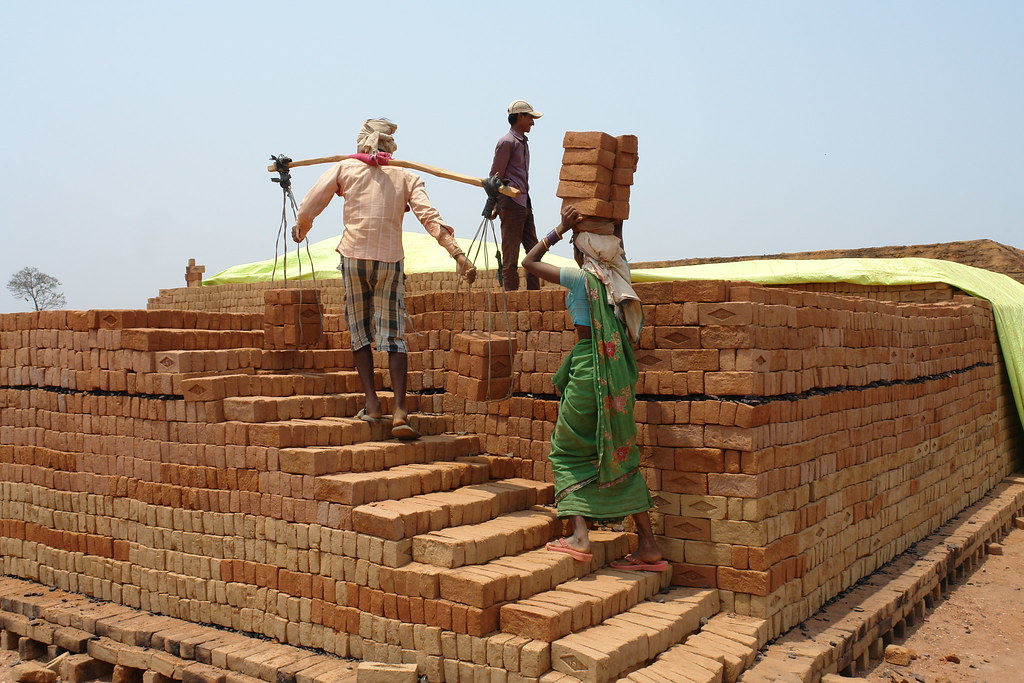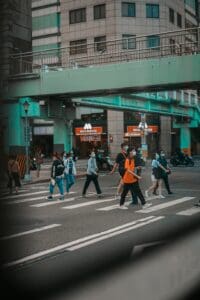Basic income is becoming a real and tangible policy consideration in India. In the past decade, many prominent Indian economists have put forward proposals for how a basic income could resolve the country’s chronic and widespread poverty. Several pilots have already taken place at the national and state levels. In 2017, the concept of a universal basic income (UBI) featured in one of the most important policy documents in India: the annually published ‘Economic Survey’ of the Union Budget. And although what has been proposed so far has not been truly universal, the other four key characteristics of UBI have been there: money should be given periodically, as cash, to individuals, and unconditionally.
How did we get here? The twists and turns of the debate, the economic, political, and moral arguments that have been deployed, and the experiments that have taken place are the focus of this piece.
Arguing for a Paradigm Shift
The story begins in 2008, when the former chief economic advisor to the Government of India, Arvind Subramanian, and his colleagues Devesh Kapur and Partha Mukhopadyay published a paper titled ‘The Case for Direct Cash Transfers to the Poor’.1 These three economists, simply KMS from here on out, called on the Indian government to replace certain central welfare schemes as well as subsidies for food, fuel and fertiliser with a single direct cash transfer. They argued that the combination of weak local administrations and apathetic public officials had made existing programmes frightfully inefficient. Gatekeepers and middlemen needed to be eliminated, they continued, and this could best be done by directly transferring money straight to those who need it. KMS’s radical proposal launched the nation into a decade of discussion around cash transfers, the problems of the current system, and the possibility of a basic income for all.
Subsidies have long been a welfare strategy of choice for the Indian government. At the top of list stands subsidised food staples and kerosene for India’s poor, which are made accessible through the Public Distribution System (PDS). The PDS began in 1947 as a universally accessible programme to deal with shortages post-independence. In 1997 it began to restrict access to certain groups. Today, about 527,000 ration shops across the country provide discounted rice, wheat, sugar or kerosene to anyone carrying a special card that identifies them as poor.
Two other hallmarks of the Indian welfare system are subsidised fertiliser and liquid petroleum gas (LPG). The fertiliser programme, created in the 1970s to make domestic fertiliser production more competitive while increasing food grain output, pays fertiliser companies a top-up so that they sell their products at below-market prices.2 The LPG subsidy lowers the cost of this fuel for all Indians and, until 2015, was also paid directly to the gas companies.
Few deny that the PDS and these other subsidies have played a role in reducing poverty. The World Bank estimates that extreme poverty declined in India from 46% to 13.4% between 1995 and 2015.3 Researchers have also shown that the PDS’s wheat and rice have reduced caloric deficiency over time.4 However, there is also evidence of large-scale inefficiency and corruption in these programmes.5 Resources have been illegally diverted,6 grains have been of inferior quality or left to rot in storage,7 and the targeting is rife with inclusion and exclusion errors.8 It is estimated that 38.6% of kerosene from the PDS ends up on the black market.9 In addition to this, it was recently found that the storage and distribution authority, the Food Corporation of India, is both underfunded by the government and in debt to banks. 10 KMS saw this system as beyond repair, and thus argued to replace it with a whole new paradigm.
The first two basic income pilots in India yielded strong positive results for beneficiaries on nutrition, debt, asset building, and several other livelihood measurements.
Right to Food Under Threat?
KMS’ suggestion to remove food subsidies proved particularly controversial among food activists. Seven years earlier, in 2001, the People’s Union for Civil Liberties in Rajasthan had successfully petitioned the Supreme Court to consider the ‘right to food’ as a legal right under the constitution. Now proponents of cash transfers were, in the eyes of food activists, seeking to abolish the main government mechanism for putting that right into practice.
They were also catching the ears of government. Many officials, it turned out, were enthusiastic about replacing welfare subsidies with cash transfers. In 2011, two major steps were taken in this direction that posed a threat to the work of the Right to Food campaign. First, in February, the minister of finance at the time used his 2011-12 budget presentation to announce a shift from fuel and fertiliser subsidies to cash transfers:
The Government provides subsidies, notably on fuel and food grains, to enable the common man to have access to these basic necessities at affordable prices. A significant proportion of subsidised fuel does not reach the targeted beneficiaries and there is large-scale diversion of subsidised kerosene oil. … To ensure greater efficiency, cost effectiveness and better delivery for both kerosene and fertilisers, the Government will move towards direct transfer of cash subsidy to people living below poverty line in a phased manner.
This announcement set off a minor earthquake in India’s social policy community. Although it was not yet an attack on the right to food, it was the first time that the government committed to moving away from in-kind welfare and towards direct cash transfers. The minister further announced that the initiative would be operationalised by linking bank accounts to biometric identification cards (the Aadhaar card). Establishing such a system, food activists feared, would set the stage for experimentation with food subsidies as well.
These fears were soon to become more acute. In December that same year the lower house of parliament began to debate the National Food Security Bill, which contained a new clause calling for the “right to a food security allowance”. This gave state governments, with approval from the central government, the right to give a cash equivalent in lieu of food to beneficiaries. This new move greatly alarmed Right to Food campaigners. A group of civil liberties activists, development professionals and academics published a joint open letter to the then-prime minister Manmohan Singh that rejected the idea of scaling down the PDS and replacing it with a cash transfer. They expressed concern that food availability would no longer be guaranteed and suggested the move reeked of corporate conspiracy.
The Right to Food campaign apprehends that the dismantling of the PDS is being done deliberately to pave the way for the entry of organized retail into the country. Giving cash without ensuring proper food availability is putting people at the mercy of food retailer sharks and cartels. We see the replacement of food grains with cash in conjunction with the decision of your government to raise the foreign direct investment limit for international capital in the retail business. This could lead to bigger retail corruption than the supposed leakages in the PDS, apart from putting farms at risk.11
Despite the strong resistance, the National Food Security Act passed in 2013 with the right to food security allowance intact.
India’s First Basic Income Experiments
While the debate over the PDS raged in the foreground, the Self Employed Women’s Association (SEWA) took the initiative to set up two basic income experiments in different parts of India. One took place in New Delhi, in partnership with the United Nations Development Program, and the other in rural Madhya Pradesh with backing from the United Nations Children’s Fund. They were designed and executed by a group of academics including Guy Standing, Renana Jhabvala, Sarath Davala and Soumya Kapoor Mehta.
These two experiments yielded strong positive results for beneficiaries on nutrition, debt, asset building, and several other livelihood measurements. In the New Delhi experiment, 100 families categorised as below poverty level were selected to receive 1,000 rupees per month over the course of a year in 2011. In the Madhya Pradesh experiment, 6,000 men, women and children were given between 150 to 300 rupees per month between 2011 and 2013. In this second, longer-term experiment, the modified randomised controlled trial found that households receiving the cash transfer were more likely to engage with banking institutions, make improvements to their dwellings, reduce indebtedness, increase spending on assets such as livestock, and switch from manual labour to own-account farming and/or small-scale business. The households receiving cash transfers also spent money on farm inputs, transport to school, health needs, and private tuition for children.


The Indian government also began to experiment with direct transfers as a method for reducing the cost of welfare to the state. In early 2013, a shift to cash transfers for scholarships and old age pensions began. Shortly thereafter, the government began the process of replacing the universal subsidy for LPG with payments into people’s bank accounts. This was quickly halted by the Supreme Court on the argument that possession of an identity card cannot be a prerequisite for access to any welfare scheme. But despite this setback, these experiments marked the beginning of a shift in social policy towards cash transfers.
When Narendra Modi became prime minister in 2014 he accelerated the pace of change in this direction. He reduced the obstacles to opening bank accounts for the poor – 18 million accounts were opened within one week of the changes coming into effect – and modified the stalled LPG scheme to provide an option for those without identity cards. According to government estimations, the scheme resulted in savings of Rs. 9,211 crore ($1.3 billion) by eliminating the system of paying subsidies to oil companies.12
One year later, the government piloted direct transfers in lieu of subsidised food in the three territories of Chandigarh, Puducherry and Dadra and Haveli. The pilot was not without problems. According to an independent analysis, many of the beneficiaries were unable to access the money and experienced welfare losses. It also cost those living far from ATMs more time to access the money through banks than it would have to acquire goods from the PDS. Nevertheless, the analysts found that beneficiaries preferred the transfer to in-kind benefits. And, similar to SEWA’s results in MP, they also found that nearly all beneficiaries improved their diet by using the money to buy higher quality grains and vegetables. The government’s experiment was certainly not a failure, but it did point to the need for improvement in banking infrastructure and beneficiary coverage. The analysts concluded with a recommendation that the government should implement a “choice-based” subsidy programme, wherein beneficiaries could choose to receive cash or in-kind benefits.13
These experiments between 2011-2015 provided some empirical data to the debate around basic income. The government has remained enthusiastic about the idea, presumably because eliminating inefficient subsidies results in massive savings of public money. SEWA and its academic team, meanwhile, have been greatly encouraged by the evidence showing that cash is emancipatory and that it allows people to pursue healthier diets. These findings helped substantiate UBI’s place of honour within the 2016-17 Economic Survey, as mentioned at the beginning of this piece. Although the chapter does not argue for immediate implementation, the authors deem it a “powerful idea whose time even if not ripe for implementation is ripe for serious discussion”.14
The bandwagon gains pace
The Economic Survey 2016-17 was led by Subramanian – one of the authors of the KMS article – and its chapter on UBI launched a new round of discussion over basic income and direct cash transfers in India. It core suggestion was a quasi-universal basic income of 7,260 rupees per year to 75% of India’s population.
Several more cases for basic income as well as a number of concrete proposals were put forward at this time from other senior economists in India. Pranab Bardhan argued that basic income is more desirable in a poor country like India, due to the “lower poverty threshold” and poor implementation of existing welfare schemes.15 Vijay Joshi thought that India’s welfare schemes were creating fiscal deficit and crowding out public spending, which could be solved by a UBI.16 Abhijeet Banerjee found that, across pilots from six different countries, there was no relationship between cash transfers and reduced incentive to work.17 And Debraj Ray suggested in Ideas for India that each recipient should receive a fixed share of gross domestic product – a “universal basic share”.18
Opponents to a basic income at this time were most vociferously arguing that the government needed to focus more on the provision of public services. These include the Nobel laureate Amartya Sen, who saw basic income as a perfect excuse for the Government of India to abdicate their responsibility to do so.19 Their fear is that a basic income would divert resources away from government schools and hospitals, and even basic rural infrastructure.20 The economist Jean Dreze also expressed scepticism, unconvinced that it should replace the existing welfare system and concerned that Subramanian’s proposal would not even cover basic subsistence. Although the majority of basic income proposals for India do not seek to reduce public spending, it’s likely that future debate will likely revolve around which public programmes to cut and which to continue to fund.
The avalanche of proposals in 2016-17 forced social policy experts to delve into serious questions of government spending, GDP, and yet again the role of the welfare state. Rahul Gandhi, the former president of the opposition Indian National Congress, announced a minimum income guarantee in his 2019 general election manifesto of 6,000 rupees per month to all families in the bottom 20%.21 Interestingly, former sceptics like Jean Dreze and Maitreesh Ghatak began to open up to the idea. Dreze has suggested that a tax on the richest 0.1% could fund the minimum income guarantee scheme,22 while Ghatak was one of twelve economists who proposed replacing subsidies with cash transfers, particularly for farmers, in 2018.23 There are signs that, among sceptics, winds are changing.
Basic income for farmers: a proof of concept?
In early 2019, the Indian government launched a minimum income for small and marginal farmers. India’s farmers face a variety of struggles, such as market failure, drought, and floods. To address this, Modi introduced a scheme called Prime Minister Kisan Samman Nidhi (PM-Kisan) that pays farmers owning up to two hectares of land a minimum income of 6,000 rupees per year in three instalments. According to the information available on the PM Kisan website, a total of 74,883,255 have received at least one instalment from the new scheme,24 though its performance across the states and actual reach have been questioned by agricultural experts.25
This nationwide programme was preceded by similar initiatives at the state level. One, introduced in Telangana in 2018, gave farmers 8,000 rupees per year unconditionally if they possessed a land title. The scheme has so far benefited 5.7 million farmers who collectively own 14 million acres of cultivable land.26 The programme’s success has since been cited in policy discussions as a reason for replacing fertiliser subsidies paid to companies with cash transfers to farmers.27
2019 has, in many ways, been the Year of the Basic Income in India.
A second initiative trialled in the state of Madhya Pradesh, where SEWA also conducted its experiment, attempted instead to institute a price support model for farmers. This gave farmers ‘price deficiency payments’ that made up for the difference between the market price and the sale price of certain products. One of India’s most respected agricultural economists, Ashok Gulati, declared the scheme a failure and suggested income support rather than price support was the better way forward. Gulati asserted that direct income support programmes are “easier to implement, more transparent, more equitable, crop neutral, and less distortionary” than price deficiency payments. His team approximated the cost of a national direct income support scheme for farmers in India to be $27.9 billion, or Rs. 1.97 lakh crore, if all farmers were given10,000 rupees per hectare per year.28
The national minimum income programme for farmers has yet to reach all its potential beneficiaries, and whether it does so or not will largely determine its success as a scheme. The attempt, however, does demonstrate just how far this idea has come in the past decade. It’s a proof of concept that, if successful, will undoubtedly offer a further boost to advocates of a basic income for all Indians.
Where Do We Stand Today?
The year 2019 has, in many ways, been the Year of the Basic Income in India. Rahul Gandhi’s proposal for a minimum income guarantee, coupled with Narendra Modi’s income guarantee to farmers, indicate that the political tides are quickly shifting in favour of a basic income in India. There is now express support for cash transfers over subsidies and the government is ramping up financial inclusion in conjunction with the introduction of biometric identity cards. Evidence from the two major SEWA experiments discussed earlier,29 as well as from other studies,30 also show that the poor frequently prefer cash to in-kind transfers.
As yet, no basic income proponent has suggested a system that would diminish the government’s responsibilities towards public healthcare, education and infrastructure. These responsibilities of the government are enshrined in the Indian Constitution. Nevertheless, a section of the Indian intellectual elite fears that implementing a basic income will cause the state to neglect public services; that privatisation will result in worse outcomes for the poor than for the rich; and that the Indian government lacks the necessary technology and infrastructure to deliver cash to its population. These are all outcomes to be guarded against and, to ensure they do not come to pass, advocates on all sides must remain vigilant. But they are worries over the perils and pitfalls of implementation, rather than conceptual objections to basic income or arguments in defence of the current system.
In the Economic Survey, Subramanian calculates that 5.2% of India’s GDP is spent on some 950 centrally sponsored schemes run by the government, eleven of which account for 50% of expenditure. It’s a complex and overburdened system. Basic income, according to its proponents, offers a new way forward. One which gives people choice while streamlining public spending in more efficient and equitable ways. If it can achieve this in India, then it might be the country’s best chance to help people out of chronic poverty and ensure a rights-based, unconditional, and more compassionate system for all Indians.





















